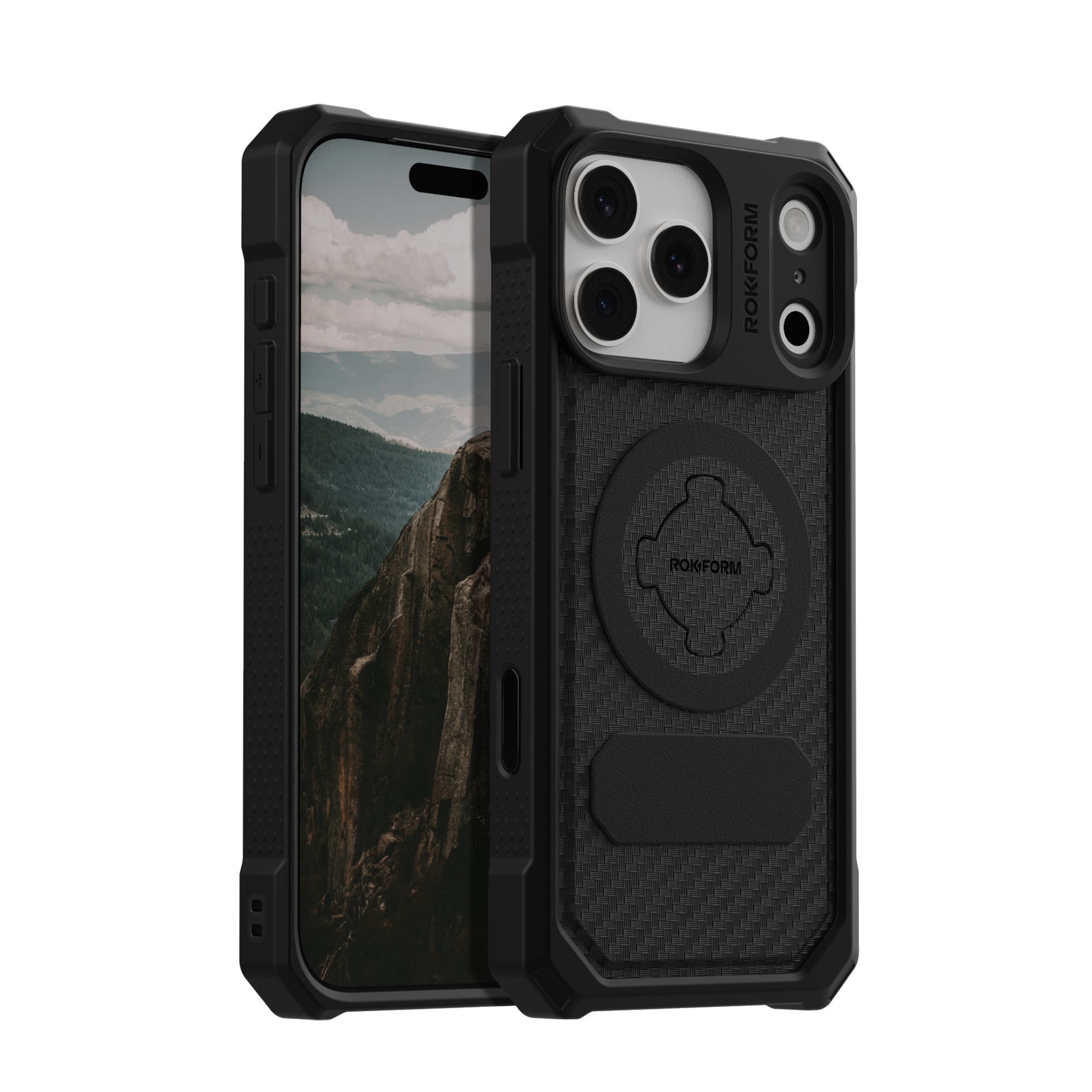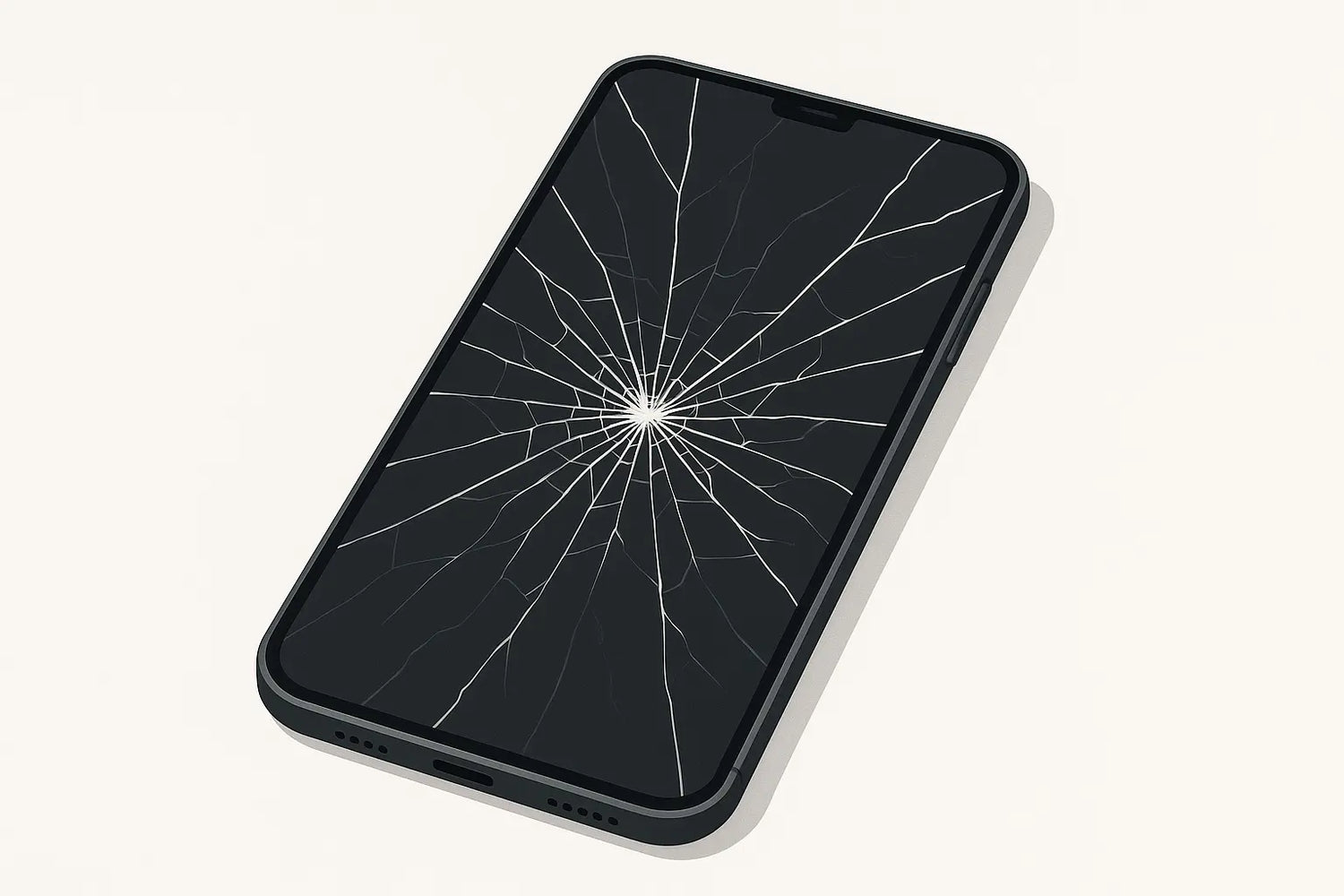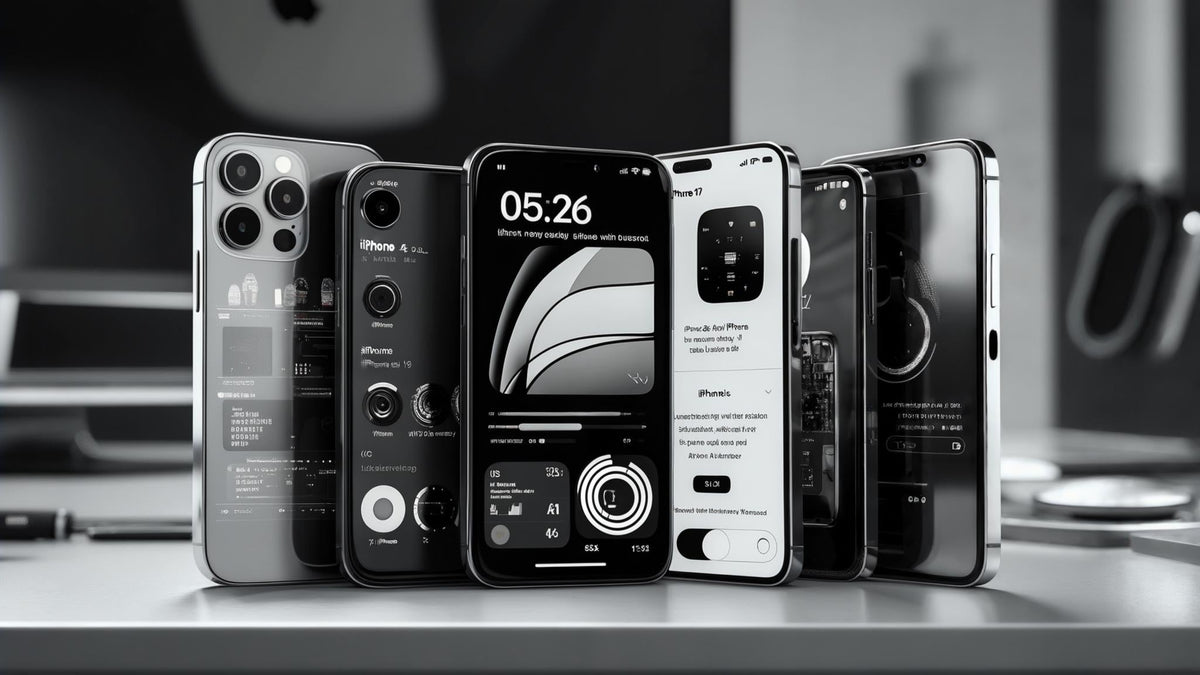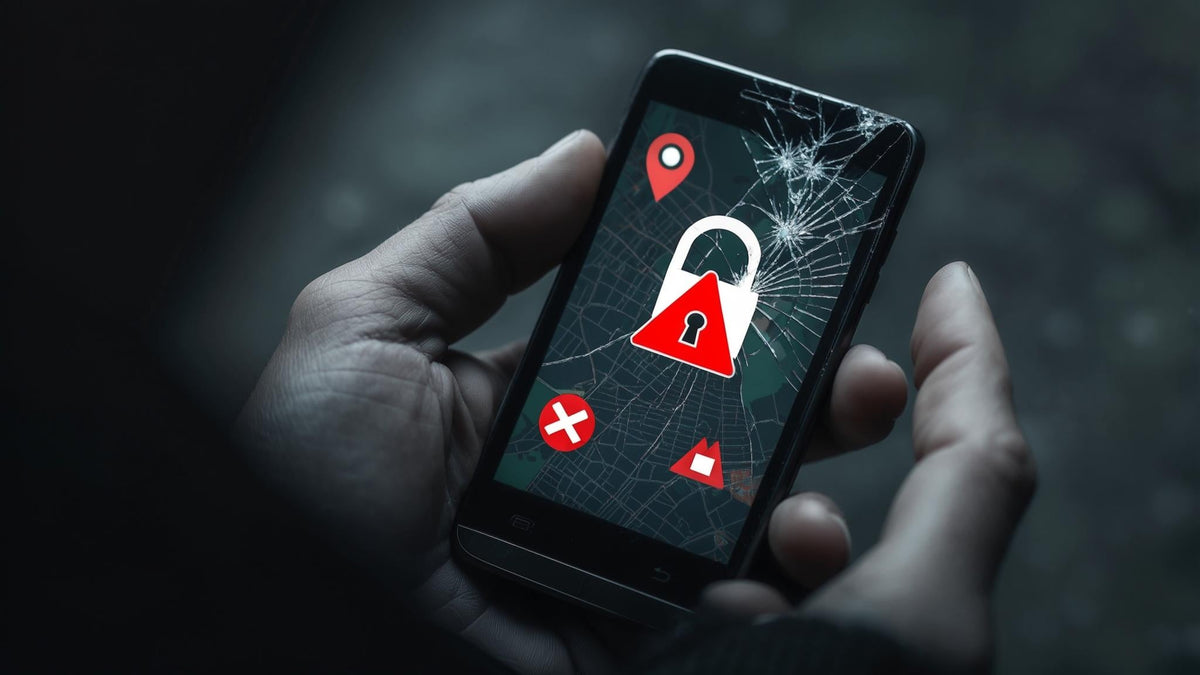Your phone screen doesn't have to crack. I know everyone says it's inevitable, but that's just not true. I'm going to show you why screens actually crack and what you can do to prevent it. This isn't about buying every expensive accessory on the market - it's about understanding what actually works and what's just marketing fluff.
Here's the thing repair techs will tell you: there are quite simple solutions to fix a cracked or broken phone screen, from quick DIY fixes to repairs from professional technicians. But wouldn't you rather never need those solutions in the first place?
What You'll Learn
Why your phone screen actually cracks (hint: it's not bad luck)
Protection methods that work vs. expensive gimmicks
Simple habits that prevent most drops
Smart repair decisions when prevention fails
Your no-nonsense protection game plan
The Bottom Line Up Front
Screen cracks happen for specific reasons - impact, pressure, and stress - not random bad luck
Good protection needs three things: a decent case, a glass screen protector, and smarter handling
Corner hits are the worst because all that force gets concentrated into a tiny spot
Most "military-grade" and "advanced" protection is just marketing - focus on the basics
Quick damage assessment and smart repair timing can save you hundreds of dollars
Changing a few simple habits prevents more cracks than any expensive case
Why Your Screen Actually Cracks (It's Not Bad Luck)
Let me break this down simply. Your phone screen is like an egg - it can handle pressure spread out over the whole surface, but poke it with a pencil and it's game over. That's exactly what happens when your phone hits concrete corner-first.
The Real Reasons Screens Break
Impact Damage: When Physics Beats Glass
Think about it this way: when your phone drops corner-first onto concrete, all that energy gets squeezed into a tiny area. Glass is actually pretty tough when force is spread out, but it fails catastrophically when that force gets concentrated.
Most people think any drop will crack their screen. That's wrong. I've seen phones survive six-foot drops onto carpet while others crack from two-foot falls onto tile. The angle, surface, and impact point matter way more than height.
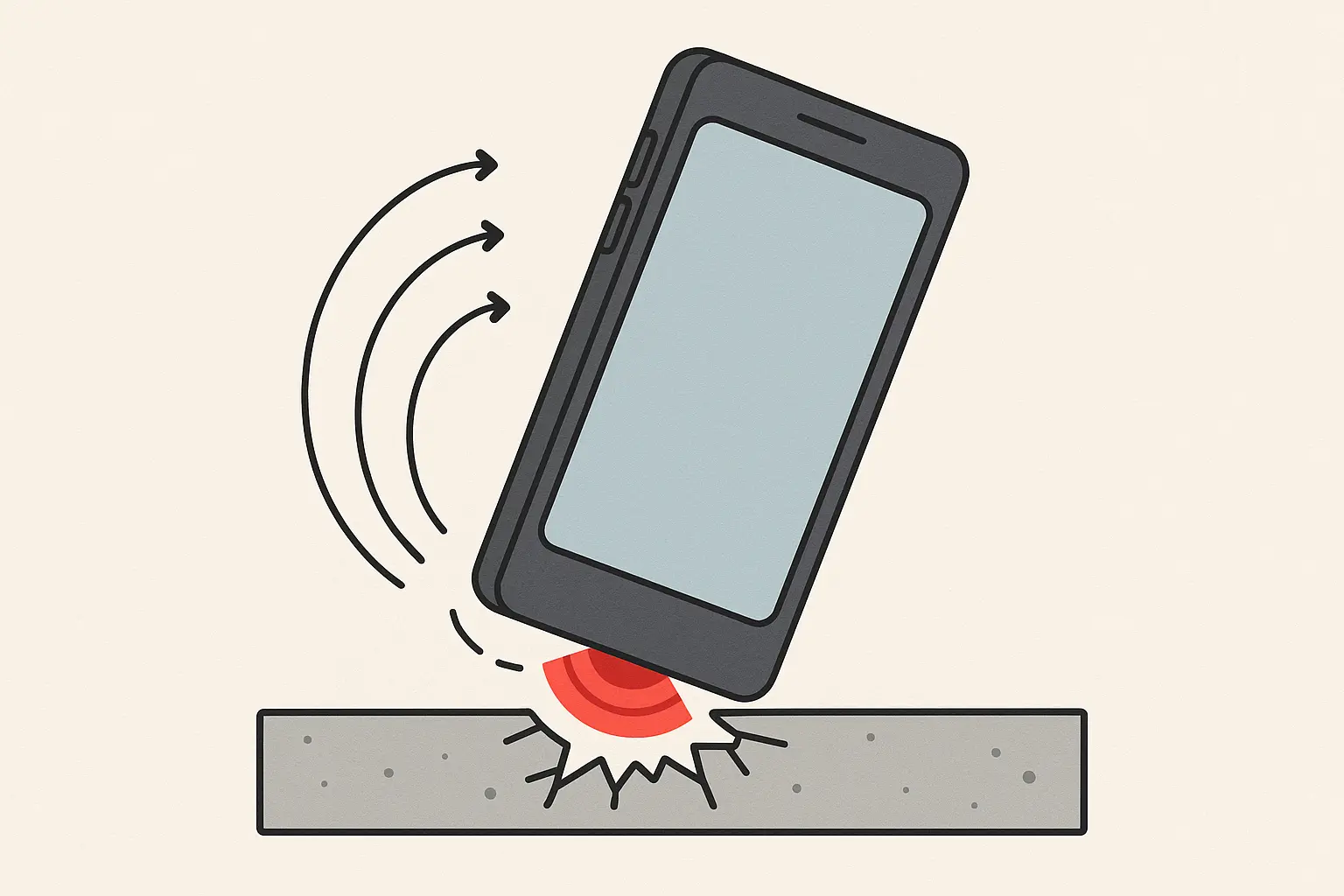
Want to understand how impact protection actually works? Check out our breakdown of how impact protection ratings are measured - it'll help you see through the marketing BS and understand what protection ratings actually mean.
Pressure Damage: The Silent Screen Killer
This one's sneaky. You won't even know it's happening until those hairline cracks start spreading. Tight pockets are the worst offenders - constant pressure and flexing create tiny fractures that grow over time.
Temperature makes this worse. Glass expands and contracts, and those microscopic cracks become weak points. What starts as invisible damage becomes a spider web after a few hot days in your car.
Environmental Stress: Your Screen's Hidden Enemy
Your phone's glass isn't as stable as you think. Extreme temperatures make it brittle. Cold snaps are brutal - I see way more screen failures in winter when phones go from heated cars to freezing air repeatedly.
Reading the Damage: What Different Cracks Tell You
Spider Web Patterns: The Classic "Oh No" Moment
These radiate out from where your phone got hit hard. Usually means a corner or edge took a serious impact. The good news? These are totally preventable with proper corner protection.
Edge Cracks: The Preventable Tragedy
These start as tiny chips along the screen edge and grow into long cracks. This pattern screams "my case didn't protect the edges." Most cheap cases don't extend high enough above the screen. Even one extra millimeter of raised edge prevents this entirely.
Pressure Cracks: The Slow Burn
Hairline cracks that seem to appear from nowhere. These come from constant pressure - usually tight pockets or sitting on your phone. They start invisible and spread over time.
Sarah's iPhone 13 got a linear crack from corner to corner after she dropped it face-down on kitchen tile. Her case had barely any raised edge - maybe half a millimeter. After switching to a case with proper 2mm raised bezels, she's dropped her phone multiple times without any screen damage.
What Actually Keeps Your Screen From Cracking
Forget the marketing hype. Effective phone screen protection comes down to three things: stopping impacts before they reach your screen, absorbing the energy when impacts do happen, and not dropping your phone in the first place.
Screen Protectors: What Works and What's Just Marketing
Tempered Glass: Your First Line of Defense
Tempered glass protectors work by taking the hit so your screen doesn't have to. When they crack instead of your actual screen, they're doing exactly what they're supposed to do.
Those plastic film protectors? They're basically expensive scratch guards. Don't expect them to prevent crack damage - I've seen too many people rely on film protectors and end up with cracked screens anyway.
Installation matters more than most people realize. Air bubbles and poor adhesion create weak spots. Take your time or pay someone to do it right. A badly installed glass protector can actually make things worse.
Recent testing by ZDNET experts found that tempered glass protectors with 9H surface hardness provide way better impact protection than film alternatives. Some models protect against drops up to 8 feet.
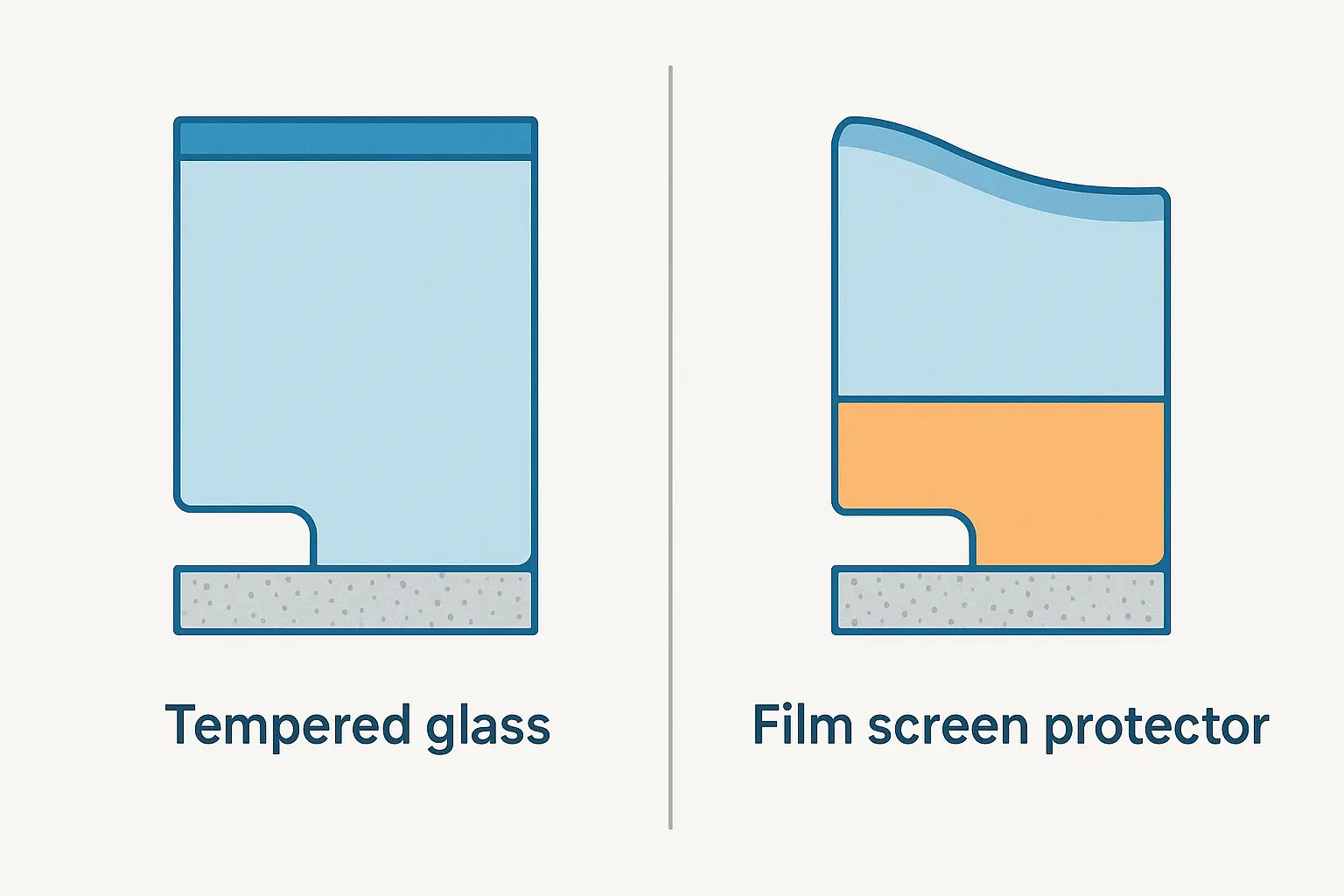
Need help choosing the right protector? Our guide to the best iPhone glass screen protectors has actual testing results and installation tips for different iPhone models.
Cases: The Good, The Bad, and The Useless
Raised bezels aren't optional - they're essential. Your case needs to stick up above both your screen and camera. Even 1-2mm makes a huge difference in face-down drops. If your screen touches the surface when you place it face-down, your case isn't doing its job.
Shock absorption happens in the materials and design, not thickness. Good cases use materials that compress on impact, soaking up energy that would otherwise transfer to your phone. Cheap cases are often just hard plastic that transfers impact straight through.
Corner protection is where most cases fail completely. Corners take the worst hits, but many cases barely protect them. Look for cases with extra material or specialized corner designs - this is where spending a bit more actually matters.
Simple Habits That Prevent Most Drops
Here's the truth: how you handle your phone matters more than what case you buy. Simple changes prevent more screen damage than any expensive accessory.
Two-Handed Operation: Awkward But Effective
Using both hands feels weird at first, but it's incredibly effective. One hand operates, the other provides security. This simple change probably prevents more drops than any case design.
Mike, a construction worker, went from dropping his phone 2-3 times a month to zero drops by making three changes: two-handed use, chest pocket instead of pants pockets, and putting his phone away during active work. His monthly repair costs went from $200+ to zero.
High-Risk Situations Need Extra Awareness
Stairs, crowded areas, and outdoor activities all increase drop chances. Sometimes the smartest move is putting your phone away entirely rather than risking an expensive accident.
Smart Storage Prevents Pressure Damage
Dedicated phone pockets eliminate most pressure and scratch damage. Mixing your phone with keys, coins, or other hard objects is asking for trouble. Even with a case, constant rubbing creates wear that weakens protection.
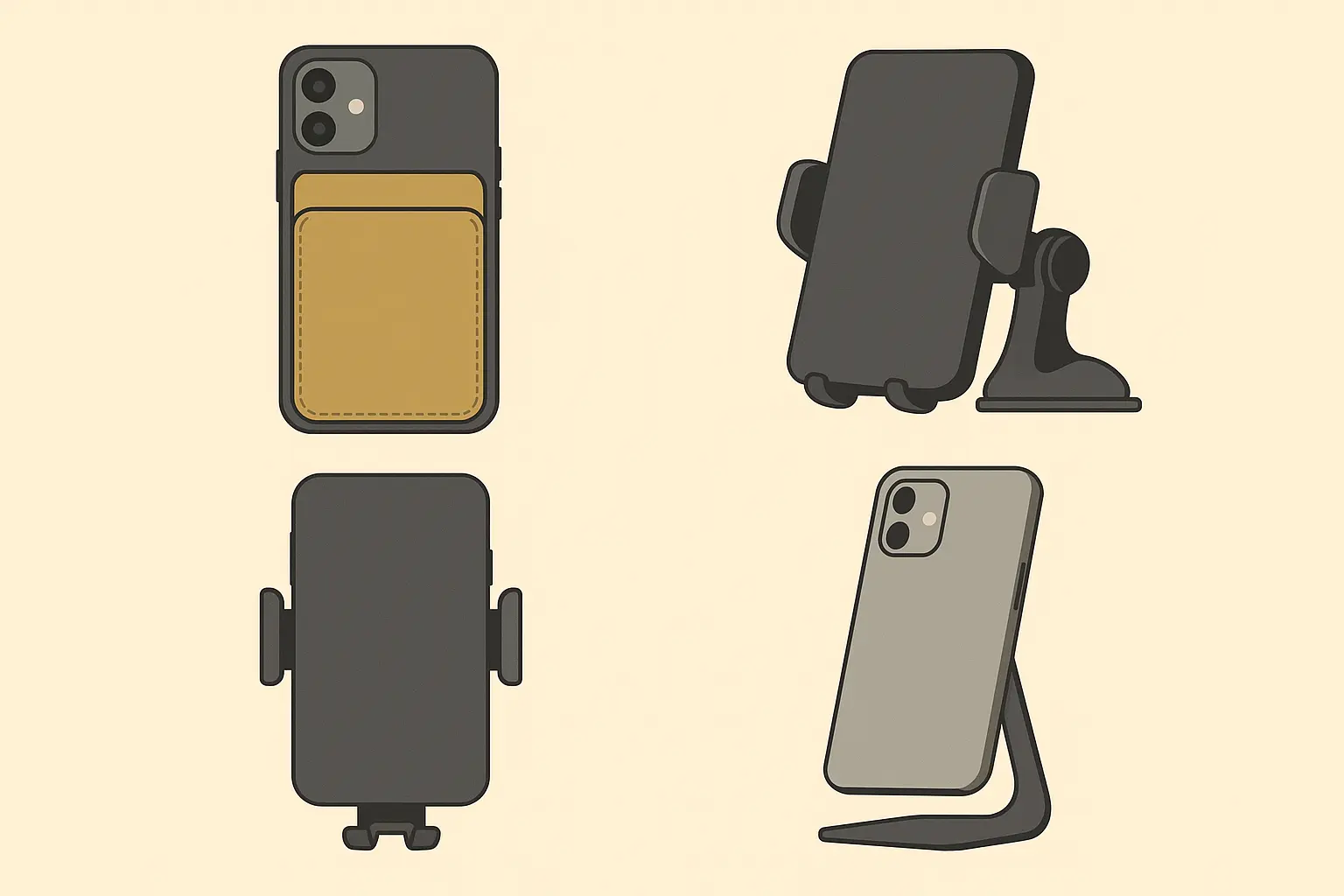
Your High-Risk Checklist
Construction sites or workshops = phone goes away completely
Crowded spaces = extra grip awareness
Cold weather = brittle glass, handle gently
Wet conditions = everything's slippery, be careful
Using tools = phone stays in secure storage
For people working in tough environments, check out our guide on the best phone cases for construction workers - it covers protection that actually handles job site abuse.
Advanced Protection: What's Real vs. What's Marketing
The protection market is full of expensive gimmicks and misleading claims. Here's how to separate actual improvements from marketing fluff.
Materials That Actually Make a Difference
Military-Grade: Not Just Marketing Fluff
Military-grade specs aren't just buzz words when they're real. MIL-STD-810G testing includes serious drop tests, temperature cycling, and vibration resistance that goes way beyond normal use.
The testing standards matter because they simulate real abuse. Six-foot drops onto concrete, temperature swings from -40°F to 140°F, vibration testing that mimics years of use - these specs indicate genuine durability.
According to Samsung protection experts, military-grade cases can handle submersion up to 1.5 meters for 30 minutes. Though they still recommend avoiding frequent water exposure.
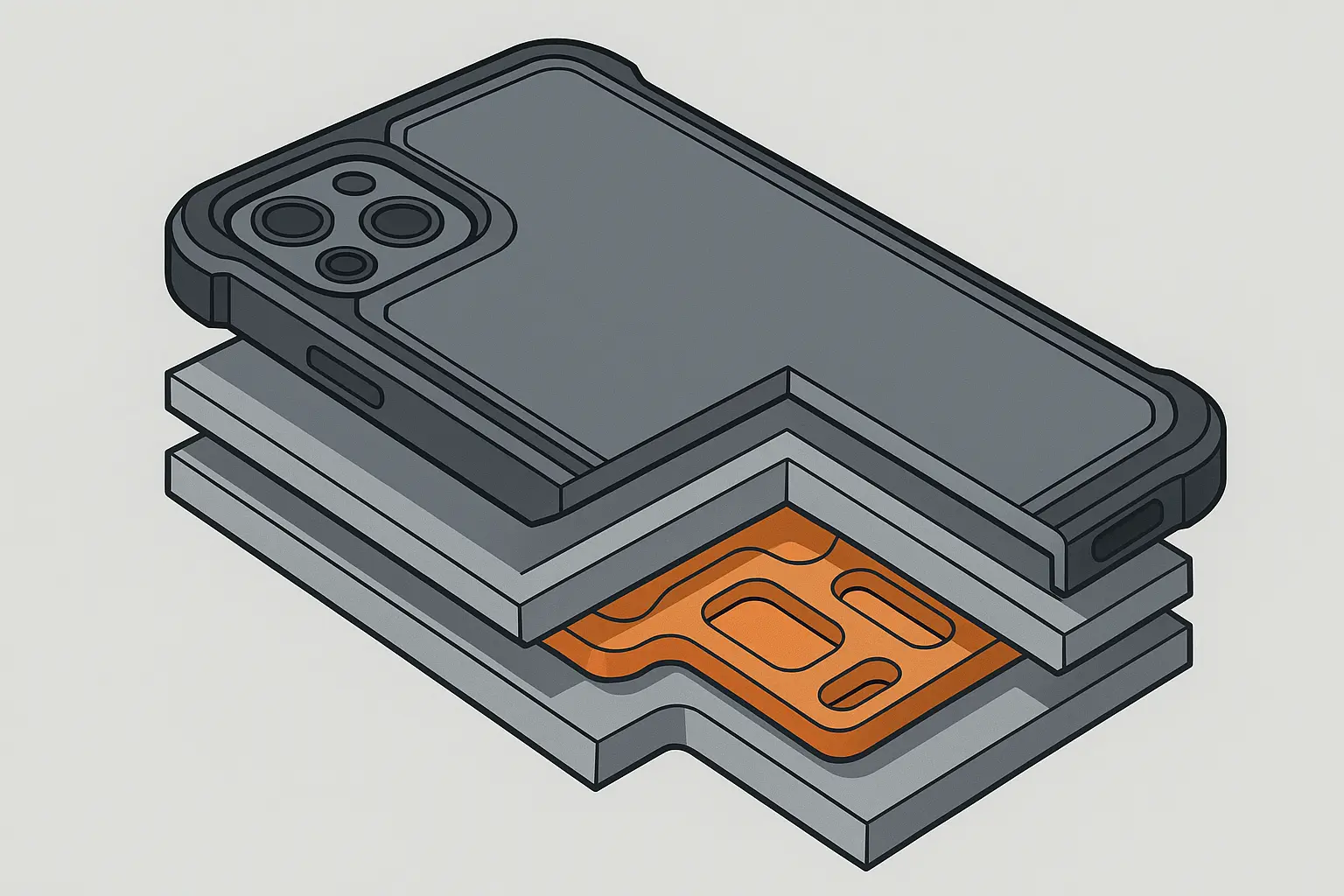
Impact Distribution: It's About Physics, Not Just Materials
Smart case designs use ribs, channels, and geometric features to spread impact energy across larger areas. This reduces peak stress that causes cracks.
The best cases create air gaps between the case and phone, letting the case compress during impacts. This compression absorbs energy that would otherwise go straight to your screen.
Protection Systems That Work Together
Multiple Layers Beat Single Solutions
Good protection acknowledges that failures happen. When your screen protector cracks, your case still works. When your case gets damaged, your screen protector maintains coverage. This layered approach dramatically improves overall protection.
But compatibility matters enormously. Screen protectors and cases need to work together without creating weak points. Poor compatibility can actually reduce protection by creating stress concentration points.
Magnetic Mounting: Reducing Drop Risk
Magnetic mounting systems cut drop risk by eliminating the constant pick-up-and-put-down cycle. When your phone stays securely mounted, you're not constantly handling it - and every handling event is a potential drop.
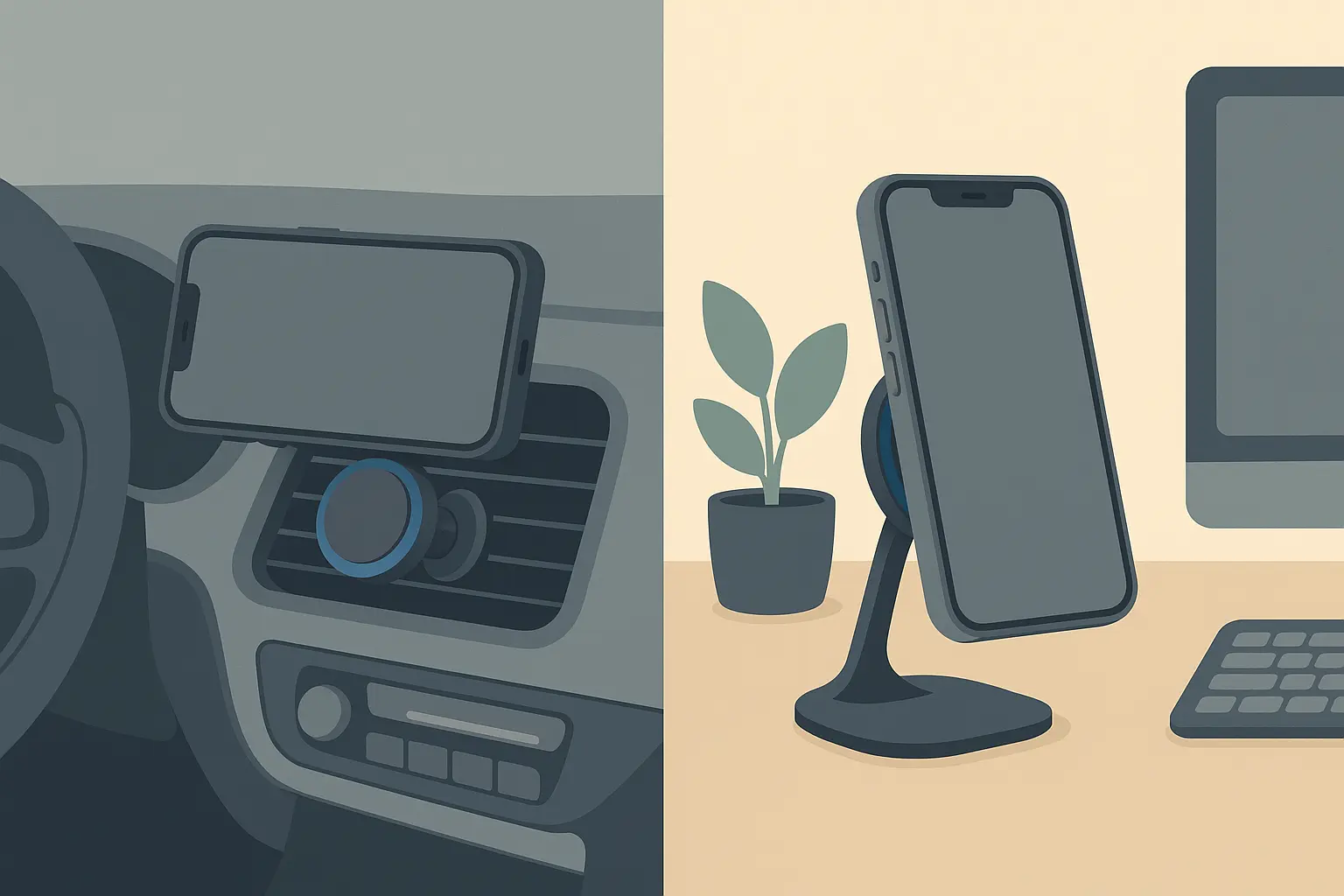
For detailed comparisons of mounting systems, check out our analysis of the best car phone mounts - it covers how different mounting technologies impact device safety.
When Prevention Fails: Smart Damage Control
Even with good protection, accidents happen. Your response in the first few minutes after damage can determine whether you're dealing with a simple repair or total device replacement.
Immediate Damage Assessment
Test Everything That Matters
Touch response tells you about internal digitizer damage. Test every area of your screen methodically - some damage only shows up in specific spots. Dead zones, phantom touches, or delayed response mean internal damage that won't fix itself.
Display issues reveal LCD or OLED damage behind the glass. Look for color distortion, bright lines, dark spots, or flickering. These symptoms indicate internal damage that typically gets worse with continued use.
Don't forget sensors - proximity sensors, ambient light sensors, and front cameras can all be affected by screen damage. Test these because sensor replacement often adds significant cost to repairs.
Emergency Stabilization
Clear packing tape works better than anything else for emergency crack stabilization. Apply it smoothly over the cracked area, pressing out air bubbles. This prevents glass fragments from falling out and can actually slow crack growth.
Avoid duct tape or anything with strong adhesive that leaves residue. You want protection that won't complicate professional repair later.
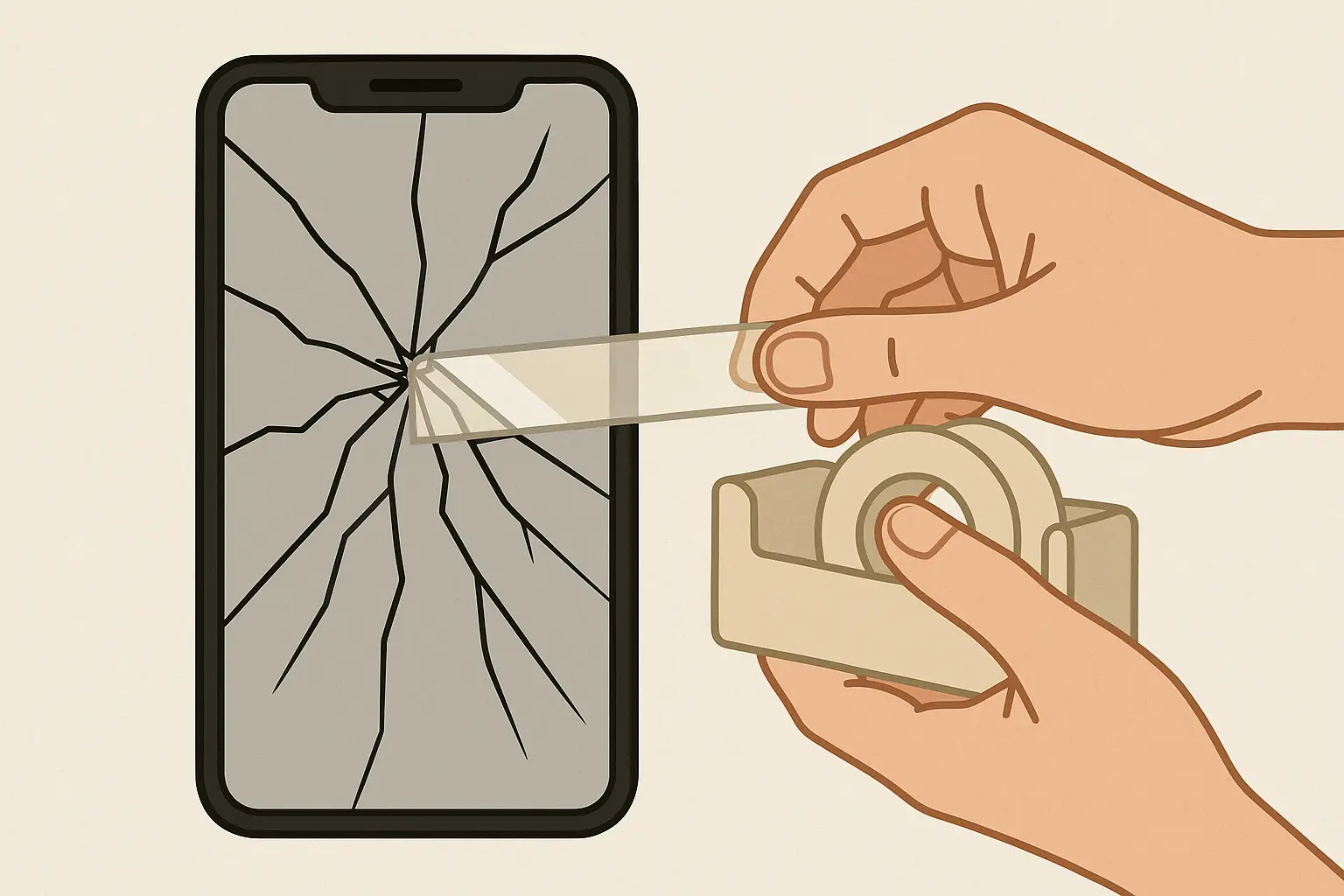
Professional Repair vs DIY: The Real Story
DIY Repairs: The Brutal Truth
Everyone thinks they can fix their own phone after watching a YouTube video. Reality check: most people mess it up. I've seen too many phones come into repair shops worse off after someone tried to "save money" with a DIY fix.
Here's what those YouTube videos don't tell you: you need about $100 worth of specialized tools, steady hands, and patience. One wrong move and you're looking at logic board damage that costs more than buying a new phone.
Mike thought he could replace his iPhone screen himself. $40 for parts, $60 for tools, and 6 hours later, he had a phone that wouldn't turn on. The repair shop said the logic board was fried. Total cost: $380 for a repair that would have cost $180 if he'd gone to a pro from the start.
Research from Science ABC confirms that "a screen protector will not protect your phone screen from all (physical) evils" and emphasizes that proper installation and quality materials are crucial for effectiveness.
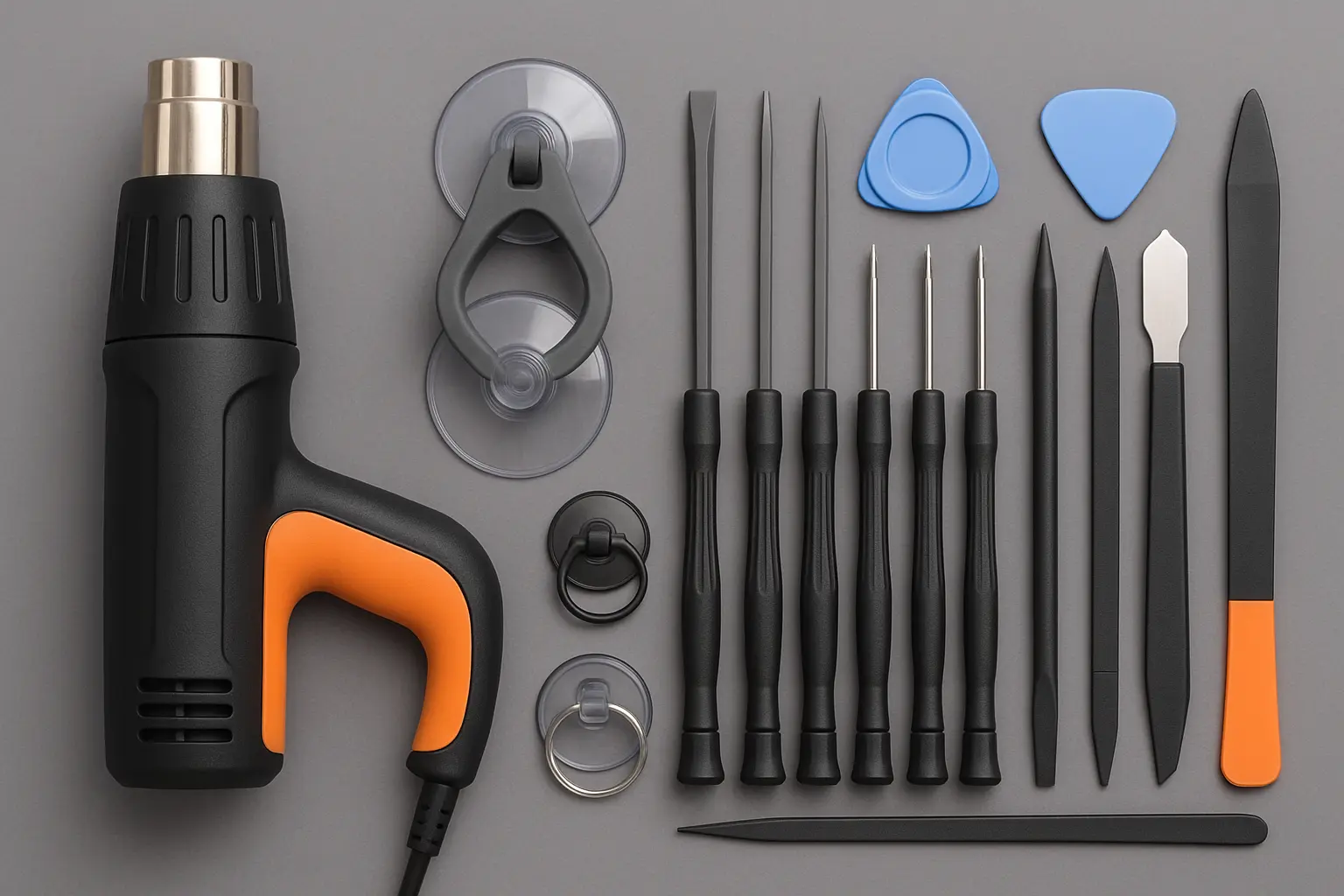
When DIY Makes Sense (Spoiler: Rarely)
Your phone is old and barely worth anything
You genuinely enjoy tinkering and don't mind if you break it
You have experience with electronics repair
Professional Repairs: What You Need to Know
Not all repair shops are created equal. Some use garbage parts that'll fail in three months. Others charge Apple prices for the same quality work.
Here's how to spot a good repair shop:
They'll show you the parts they're using
They offer warranties on their work (at least 90 days)
They can give you a firm price upfront
The place doesn't look like it's about to close down
The Real Cost Breakdown
Your phone's age determines whether repair makes financial sense:
Less than 18 months old: Almost always worth repairing
18-30 months: Depends on the damage and your upgrade plans
Over 30 months: Usually better to upgrade unless it's minor damage
Sarah's two-year-old Galaxy had a cracked screen. Repair quote: $220. Her phone's trade-in value: $180. She decided to upgrade instead and put that $220 toward a new phone. Smart move.
Your Protection Game Plan: Keep It Simple
Forget everything complicated you've read. Here's your simple, no-nonsense strategy to protect phone screen from damage:
Step 1: Get the Basics Right
Buy a case with raised edges (at least 2mm above your screen)
Get a tempered glass screen protector
Install it properly or pay someone to do it
That's it. Don't overthink this part.
Step 2: Change These Habits
Use both hands when possible
Keep your phone in a dedicated pocket (no keys or coins)
Put it away when you're doing anything active
Never put it in your back pocket
Step 3: Know Your Risk Zones
Stairs and crowded places = extra careful
Cold weather = brittle glass, handle gently
Working with tools = phone goes away completely
The Money Talk
Good protection costs about $50-80 upfront. Screen repairs cost $150-300. You do the math.
But here's what most people miss: it's not just about the money. It's about not dealing with a cracked screen for weeks while you decide whether to fix it. It's about not losing your phone for a day while it's being repaired. It's about peace of mind.
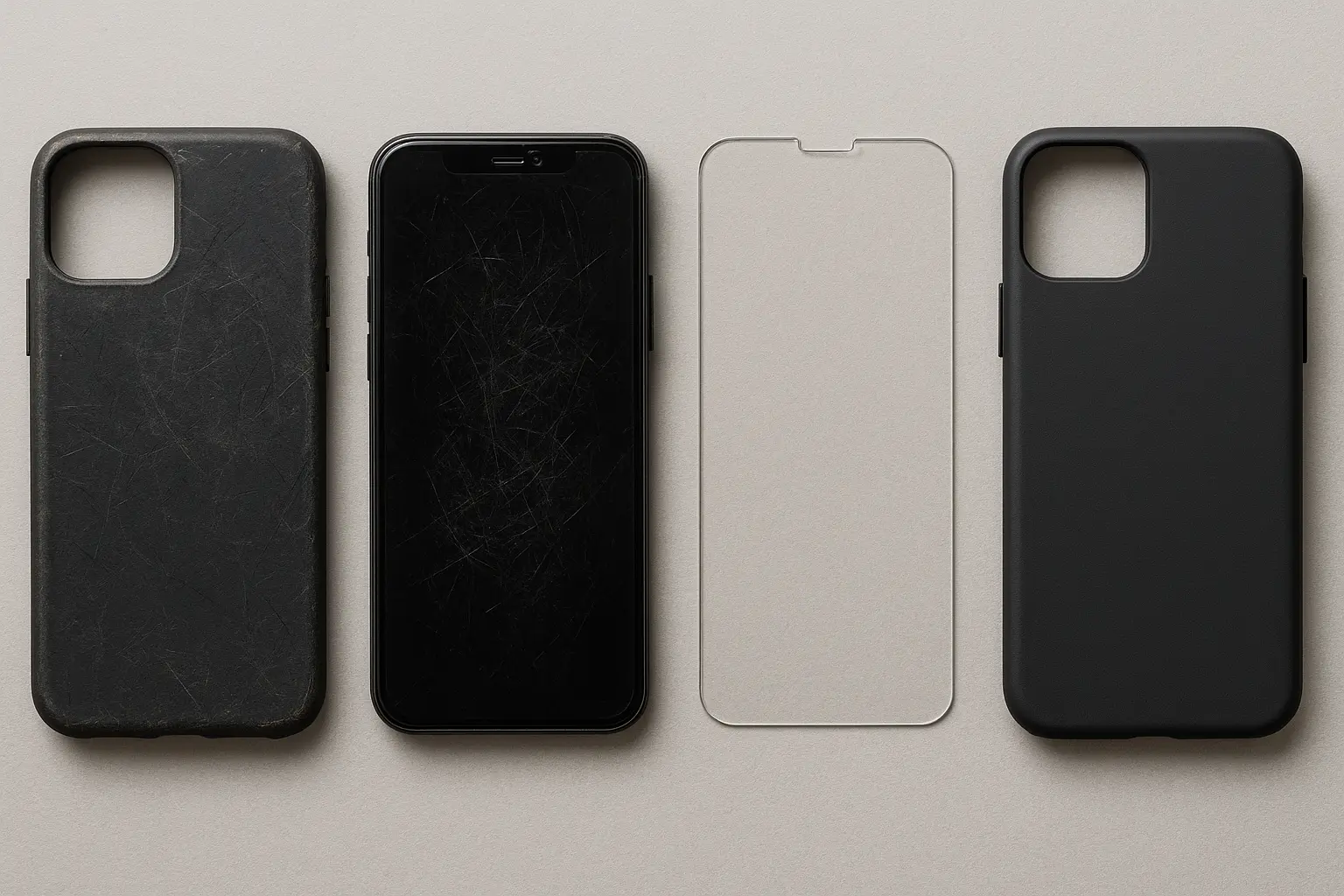
When to Upgrade Your Protection
Your case and screen protector aren't lifetime purchases. Replace them when:
Your screen protector cracks (it did its job)
Your case shows wear around the corners
You've had the same setup for over a year
Your lifestyle changes (new job, new hobbies)
Building Long-Term Protection That Works
Match Protection to Your Actual Life
Office workers face different risks than construction workers. Desk work mainly involves pressure damage and minor drops, while field work means impacts, debris, and environmental hazards. Your protection should match your actual risk.
First responders need protection that won't fail during critical situations. When your phone is a lifeline, protection becomes a safety issue, not just convenience.
Outdoor professionals - guides, surveyors, field techs - need protection that handles temperature extremes, moisture, and repeated impacts. Standard consumer cases often fail in these environments.
For high-risk jobs, check out our guides for law enforcement phone cases and firefighter phone cases that provide extreme protection for demanding work.
Activity-Specific Considerations
Cycling and motorcycles expose phones to vibration, weather, and high-speed impacts. You need vibration dampening, secure mounting, and impact protection designed for crashes.
Photography and content creation require protection that doesn't interfere with camera functionality while providing security during active shooting.
Water sports need waterproofing beyond basic splash resistance. True submersion protection requires specialized sealing systems that consumer cases rarely provide.
Our guide on the best phone mount for bikes addresses specific protection and mounting challenges for cycling enthusiasts.
Smart Economics: Protection vs Repair Costs
Total Cost Analysis
Calculate protection costs over your device ownership period, not just upfront. A $100 protection system used for two years costs $50 annually, while multiple cheap cases and screen replacements often cost way more.
Lisa calculated her three-year costs: $80 for quality case and screen protector versus her previous pattern of $150 annual repairs with cheap protection. Premium protection saved her $370 while providing better functionality.
Insurance vs Physical Protection
Insurance deductibles often exceed quality protection costs, making physical protection the better first defense. Use insurance for catastrophic damage, not routine screen repairs.
Many policies exclude "normal wear" damage or have claim limits that leave you exposed after multiple incidents. Physical protection works regardless of policy terms.
Future-Proofing Your Investment
Universal Systems Beat Device-Specific Accessories
Magnetic adapters, car mounts, and desk stands can serve multiple devices over years, making them better long-term investments than device-specific cases.
Screen protectors and cases require replacement with each upgrade, so factor replacement costs into your upgrade budget.
Our guide to MagSafe products explains how magnetic systems provide consistent protection across multiple device upgrades.
Staying Ahead of Design Trends
Device trends toward larger screens, multiple cameras, and wireless charging affect protection requirements. Choose systems that accommodate these trends rather than fighting them.
Material and testing advances continue improving effectiveness while reducing bulk and cost. Stay informed to time your protection upgrades for maximum benefit.
For comprehensive protection comparisons, see our analysis of the most protective phone cases to understand which systems offer the best long-term value.
The Bottom Line
Phone screen protection isn't rocket science, but it's not something you can ignore either. Spend a little money upfront, change a few habits, and you'll save yourself hundreds of dollars and countless headaches.
Most importantly, find a protection system you'll actually use. The most expensive case in the world won't help if it's sitting in a drawer because it's too bulky. The best protection is what you use every single day.
Your phone is probably worth $500-1200. Protecting it properly is just common sense. Don't overthink it, don't overspend on gimmicks, and don't skip it entirely. Just get good basic protection and use your head.
That's really all there is to it.

